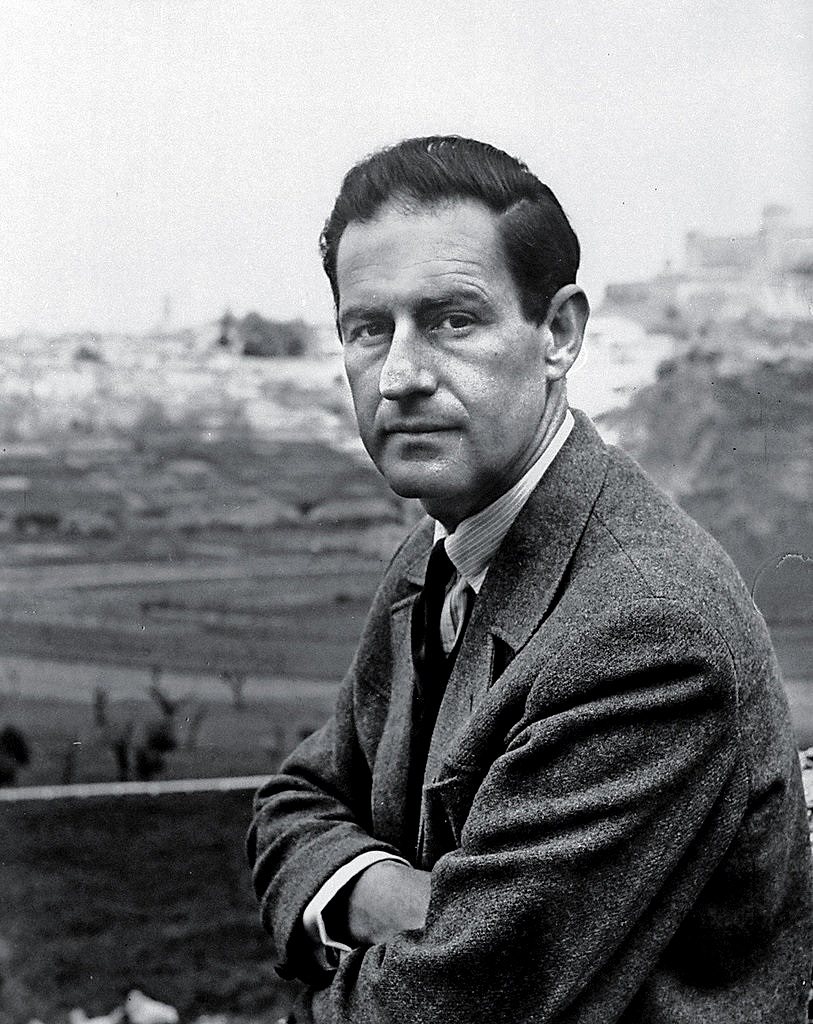
Among the many pages of musical history, 24th December 1951 was an important date because it marked the first performance of a new opera by composer Gian Carlo Menotti. But this was no ordinary opera. It was performed in a television studio or to be more precise, NBC’s Studio 8H in the Rockefeller Center, New York City. It was in fact, the first American opera composed specifically for television and it was estimated that five million people watched the live broadcast. The opera was Amahl and the Night Visitors and the annual television performances during the 1950s and early 1960s became a cherished Christmas tradition for many people. It’s probably one of America’s favourite operas of all time.
Although Menotti was born in Italy near the shores of Lake Lugano, he spent most of his later life in America. In 1928 he enrolled in Philadelphia’s Curtis Institute of Music where he met fellow students Leonard Bernstein and Samuel Barber. Although Menotti wrote several ballets and numerous choral works he’s best-known for his popular operas, written in an approachable musical style and often with rich traditional harmonies. He wrote twenty-eight of them, the first two when he was only eleven years old.
Amahl and the Night Visitors is a tender and moving story about human relationships and the undying love between a widowed mother and her son. It’s set in a village somewhere in Judea, a long time ago. Amahl is a fatherless disabled boy of about twelve, who can walk only with the aid of a simple wooden crutch. There’s an interesting biographical connection here because when Menotti was a boy, he too lost his father. It’s said that he also became lame and because the doctors couldn’t help him, he was taken to the Sanctuary of Sacro Monte to be blessed. Miraculously, the young Menotti was cured of his disability. Or so it was claimed.
The story begins one night when Amahl and his mother are visited by three strangers who turn out to be kings. They tell of a wondrous child who has just been born in the town of Bethlehem and how they’re taking gifts to him, finding their way by following a star. The short opera tells the story of what happened that memorable night in Judea and how Amahl’s life was changed forever. It’s been described as “a charming story of a child’s pure love, and the miracle that love produces”.
Getting the opera complete before the television broadcast was something of a scramble. Menotti had still not finished the opera, let alone the instrumental parts. The singers had very little time to rehearse and received the final pages of the opera just days before the broadcast and the composer’s friend Samuel Barber was called in to help finish the orchestration. The original 1951 version is still available on YouTube, and as a historical document it’s fascinating, but of course it relies on the television technology of sixty years ago when studio cameras were almost the size of refrigerators.
This is a filmed version of the opera directed by Arvin Brown in 1978. It’s presented on YouTube in six separate parts, each running for about ten minutes but in many ways it’s an improvement on the 1951 original. Both Robert Sapolosky and Teresa Stratas are exceptionally good in the key roles, both as singers and actors. The opera is full of catchy and memorable tunes but to fully enjoy it, I’d strongly recommend that you <a href = “http://www.jacobus.de/neu/tmp/Amahl.pdf”> download the libretto </a> and either print it out or read it on a mobile device.
It’s is a wonderful introduction to opera for children especially those between the ages of ten and thirteen. It’s in English too and although there might be a bit of giggling when the characters sing rather than speak, the novelty will soon wear off.
Like Wagner, Menotti always wrote his own libretti and some of the text is richly evocative with beautiful imagery. In case you’re wondering, the phrase “the colour of dawn” comes from an aria sung by King Melchior which begins, “Have you seen a child the colour of wheat, the colour of dawn?”
This is one of the most moving moments in the opera, because the King is referring to the child in Bethlehem while Amahl’s mother wonders whether he’s describing Amahl. There are many other emotionally charged moments too, especially the joyful and unexpected climax towards the end of the opera. Just be sure you have a large box of tissues handy.
 |
 |
 |





